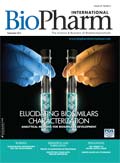Regulatory Roundup
Updates on user fees, heparin supply concerns, orphan drug incentives, REMS updates, reference standards for proteins, and patent settlements.
FDA user fees caught in sequester
Congressional leaders are backing legislation to make all drug user fee revenue accessible to FDA, instead of being tied up by the budget sequestration process. FDA has lost approximately $85 million of its $1 billion user fee revenue this year under the budget cutting-process, which applies to all FDA revenues, including the fees paid by pharmaceutical, generic-drug, and medical device companies. A portion of user fees will be stuck in the Treasury Dept. unless Congress agrees on language exempting FDA fees from sequestration.
Legislators weigh further curbs on patent settlements
The Federal Trade Commission is continuing its campaign against pay-for-delay arrangements between brand and generic-drug makers, lending support for legislation that would clearly outlaw these deals. These issues were aired at a July 23, 2013 hearing before the Senate Judiciary subcommittee on antitrust and consumer protection, where Democrats praised the Supreme Court’s June ruling that upheld the government’s right to contest brand-generic patent settlements. At the hearing, FTC chair Edith Ramirez laid out the Commission’s plan to continue monitoring and pursuit of pay-for-delay cases and to re-examine previously filed pharmaceutical agreements. Manufacturers sought to head off deal-killing legislation, while consumer representatives and economists debated whether patent agreements actually reduce or raise drug prices. Senate leaders also urged action to prevent manufacturers from extending patents by adopting relatively minor product redesigns that appear to offer minimal therapeutic benefits for patients.
Regulators seek reference standards for proteins
FDA officials and biotech experts discussed strategies for developing international reference standards for biotech products at the July CMC Strategy Forum organized by CASSS. Reference standards are essential to assess potency, purity, and identity of drug products from initial development through commercial manufacturing, observed Markus Blumel of Novartis Pharma in opening the meeting. The emergence of more complex biotech products heightens the need for well-defined processes for selecting materials, analyzing interim and primary reference standards, and for using working standards to confirm that products remain well characterized and stable throughout the product life cycle.
Sarah Kennett, review chief in the Division of Monoclonal Antibodies, Office of Biotechnology Products in the Center for Drug Evaluation and Research, noted that the International Conference on Harmonization Q6B guidance of 1999 addressed reference standards, as does other guidance from FDA and the European Medicines Agency (EMA). But forum attendees urged further collaboration to establish harmonized assay methods and international reference standards, possibly through the World Health Organization and compendial organizations.
FDA explores REMS updates
Concerns about a proliferation of diverse and burdensome risk evaluation and mitigation strategies (REMS) required by FDA for many new drugs and biologics prompted Congress to order a review of the program in the FDA Safety and Innovation Act of 2012 (FDASIA). Added pressure comes from a January 2013 report from the Health and Human Services Inspector General criticizing FDA for doing a poor job assessing REMS. FDA, therefore, held a two-day meeting in July to seek help from stakeholders in identifying strategies for improving the program. FDA officials heard from manufacturers, physicians, pharmacists, and others on ways to standardize REMS and integrate required procedures into the healthcare delivery system. FDA plans to issue guidance on determining when a drug is so risky that a REMS is needed, and on methodologies for evaluating REMS. At the same time, the European Medicines Agency is updating its policies governing postmarketing risk management plans, and manufacturers would like to see harmonization between the US and European requirements. FDA is soliciting comments on REMS issues through mid-September and will explore REMS standardization and integration options further with an expert panel on September 25.
Orphan drug incentives
Manufacturers and patient groups are gearing up to press for continued authorization of the Orphan Drug Tax Credit, which is threatened with repeal as part of broader tax reform initiatives slated for debate this fall. The National Organization for Rare Disorders (NORD) and some 60 rare disease patient organizations sent a letter to Congressional leaders in July citing the importance of the tax credit in spurring development of orphan disease treatments. Small biotech and pharmaceutical companies benefit in particular from the 50% credit on clinical drug testing costs for therapies that FDA deems orphan drugs. The orphan disease community also wants FDA to address orphan drug development issues more specifically in draft guidance on expediting the review of drugs to treat serious conditions.
Heparin supply concerns
Leaders of the House Energy & Commerce Committee are questioning whether a Chinese takeover of the largest US pork producer, Smithfield Foods of Virginia, will deprive US pharmaceutical companies of pork-derived crude heparin. US officials have been wary of Chinese heparin supplies since tainted products were tied to dozens of US deaths in 2007-2008. Congressional investigators want to know how much crude heparin Smithfield currently provides to pharma manufacturers and if that will change following the $4.7 billion purchase of the firm by Shunanghui International Holdings. The House committee has been critical of FDA’s investigation into the heparin contamination incident and eager to highlight any action that could jeopardize US products.
